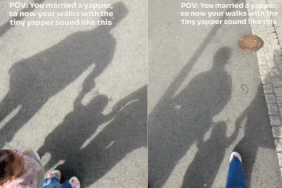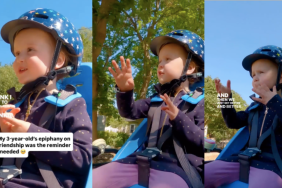Have you been wondering if your child needs speech therapy? We sought answers from Jessica Wilbur, MA, CCC-SLP, a speech-language pathologist who specializes in pediatric speech and language at Waldo County Hospital in Belfast, Maine. Here’s everything you need to know about speech therapy for toddlers, speech delay, and language development.
What is the typical age when kids start talking and what do they say?
“There is a wide range of normal development for speech and language, but as a general guide, kids are babbling a lot by nine months, and say their first real word by one year,” Wilbur says.
What kinds of words and sounds should toddlers be practicing?
The majority of a toddler’s early vocabulary is typically simple nouns and verbs. Wilbur points out that toddlers should be practicing combining words into phrases and that parents can help kids develop healthy speech patterns by modeling good language. “We know that language input for toddlers is much more ‘sticky’ when it’s about something that they are interested in,” Wilbur says, adding, “So, if your toddler points and says, ‘Ball!’ You could then expand and say, ‘Big ball! Big red ball!'”
Is baby talk dangerous for language development, or should adults always speak like articulately around young children?
“There is a reason people naturally slow their rate of speech and use a sing-song type voice when speaking to babies (it’s called motherese),” Wilbur says. She explains that “baby talk” is actually helpful for young children to decipher different words and sounds. “As your child grows and learns, we want to be modeling adult-like speech and language for them throughout the day. We know that babies that hear more language develop larger vocabularies at a younger age.”
What are signs that my child needs speech therapy?
Parents are the experts on their own children. “If you have a sense that there is something amiss in their development, talk to your child’s pediatrician about your concerns,” Wilbur says. While no two children are alike, kids, in general, develop along a predictable path.
“As a general guideline, children are babbling by six months, combining different sounds to make word-like vocalizations by nine months, and using single words by one year. At 18 months, they typically begin combining words, and then they go through a language spurt, picking up new words daily. By two they are usually making two- to three-word phrases and understand simple language and questions. By three years, they are saying three- to five-word phrases, can tell short stories, and are following two-step directions. In terms of speech development, you should be able to understand about half of what a child says at two years old, 75 percent at three years, and they should be almost completely understandable by four years. They may continue to have some sound errors on later developing sounds like R, L, S, and Th. They should have an adult-like speech by seven years.”
What does a speech therapist do?
“A speech-language pathologist is someone who is trained to diagnose and treat disorders in speech, fluency, language, social communication, voice, and swallowing in children and adults,” Wilbur explains. “Speech disorders include difficulty with producing speech sounds correctly or fluently. Language disorders include trouble understanding others or expressing their feelings, thoughts, and ideas. For more information on speech-language pathologists visit ASHA.org.”
How do I find speech therapy for toddlers?
First, talk to your child’s pediatrician about your speech delay concerns. “They can then refer you to a local speech-language pathologist,” Wilbur says. She notes that a quality speech-language pathologist will have a master’s degree and a certificate of clinical competence from the American Speech-Language-Hearing Association (ASHA), listed as CCC-SLP after their name.
Do speech delays indicate autism or other intellectual problems?
Wilbur says speech delay can sometimes be a red flag signaling another disorder. Look for across-the-board delays in motor and cognitive development, limited eye contact or joint attention in babies and toddlers, and limited or no back-and-forth interactions (which includes back-and-forth vocal play—think: games such as peek-a-boo). If you have concerns about your child’s development, speak to your child’s pediatrician.
What can parents do to encourage healthy speech and language development?
It is important to read and speak to your child every day. “Create a language-rich environment for them. Saturate them with language,” Wilbur says, adding the following tips:
- Acknowledge and reinforce any communication attempts that your baby makes, including non-verbal communications.
- Create opportunities for them to speak, and give them wait time to respond.
- Build and expand on what your child says.
- As they are learning words, sounds, and sentence structure, acknowledge their message, and repeat it back to them using appropriate speech or language. For example, if they say ‘me swing,’ you could say, “Yes! You played on the swings!”
- Ask them questions, read them books, tell them stories, and model lots of vocabulary.
Photo: Getty








